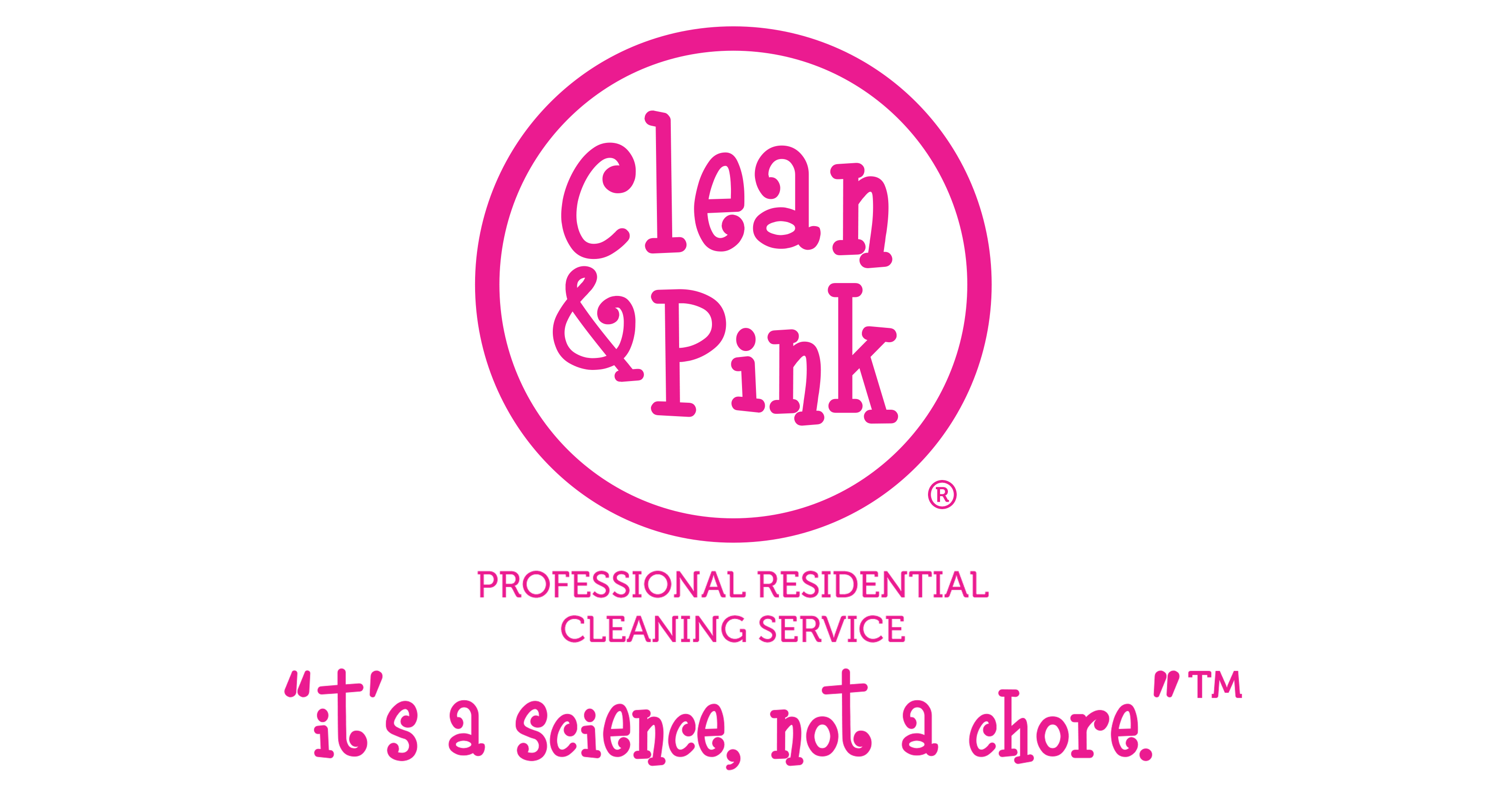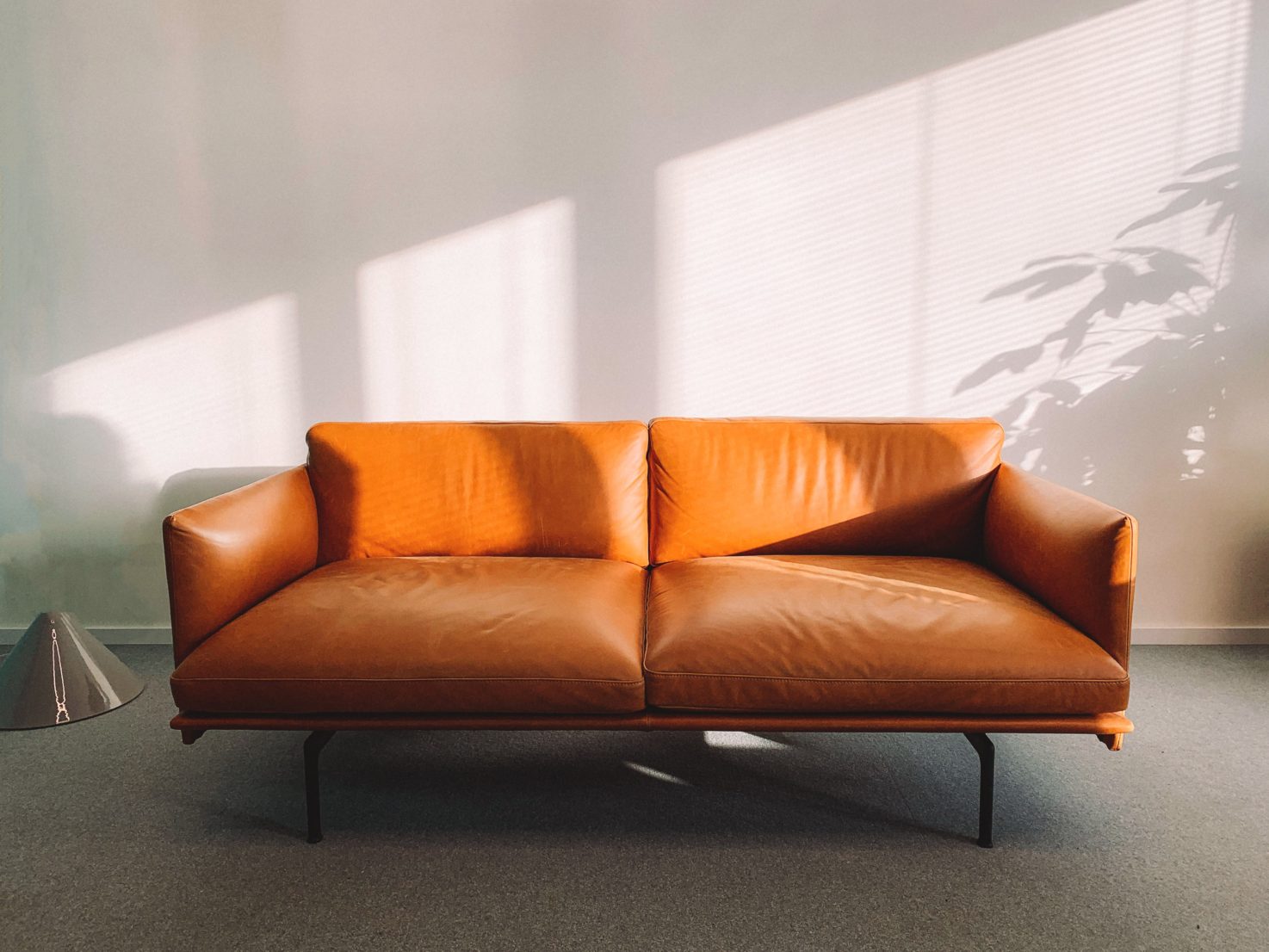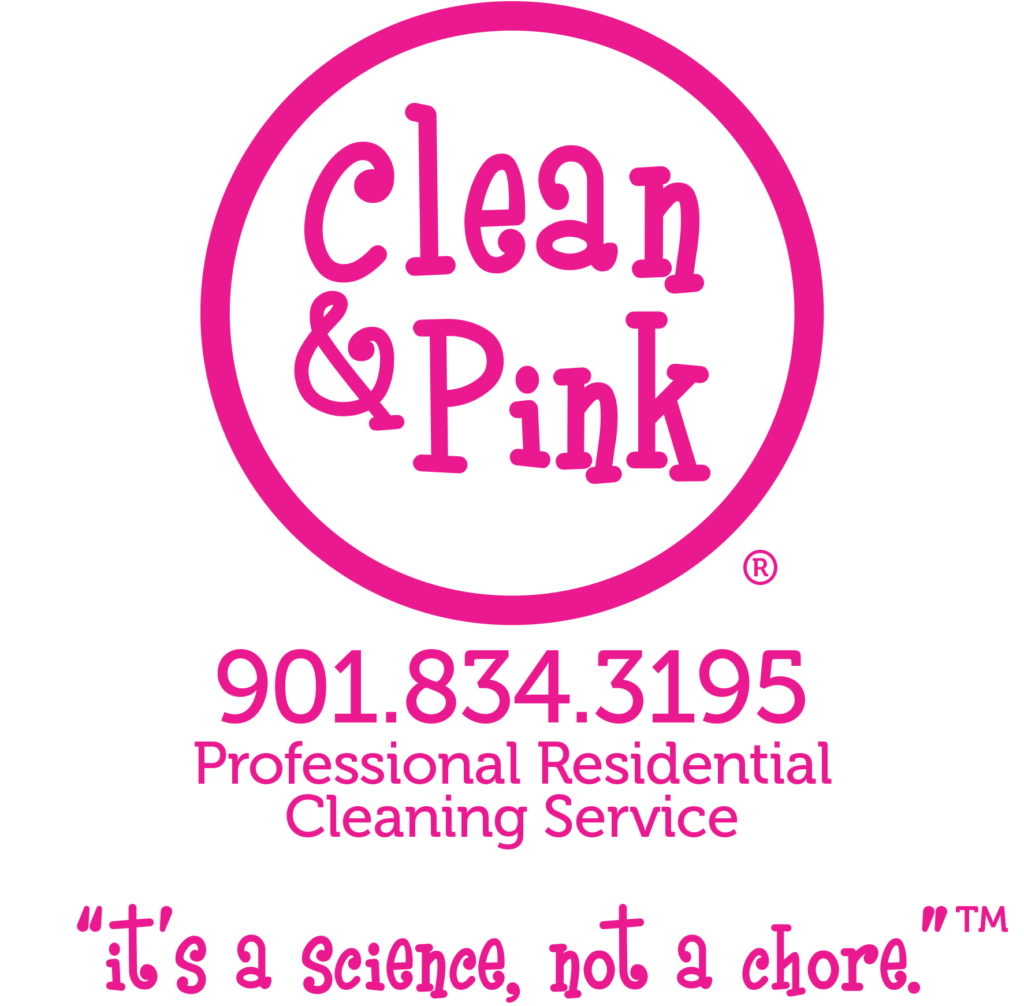While normal wear and tear on your leather furniture is expected with time, taking the proper care needed to maintain leather goods can help boost its longevity for years to come. Now that you understand how to identify different types of leather from our previous blog post Click Here to Review, you are now ready to learn how to care for different types of leather products with confidence!
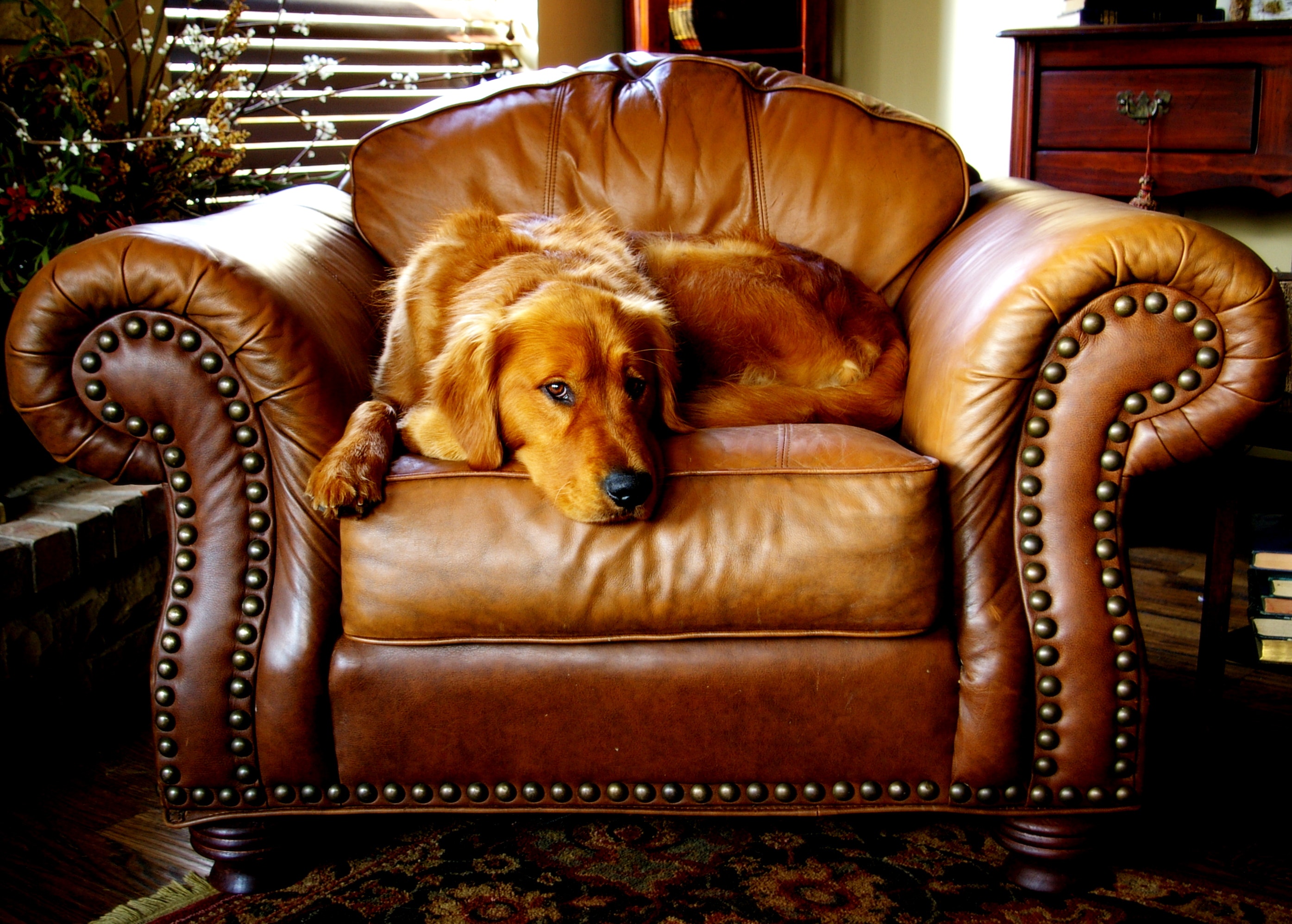
***Remember that any cleaning technique that you attempt should first be tested on a small discreet area of your leather product.
How to Care for Aniline Leather:
Aniline leather is a very soft and natural type of leather, as it is only dyed and contains no pigmented surface coating. Because of this property, aniline absorbs stains and moisture very easily. It is better to work whatever cleaner that you use into a foam before applying it to aniline for the best results. Distilled or rainwater should be used on this type of leather as tap water can be quite harsh.
Because aniline leather is unprotected, dirt and grime do not simply sit on the surface of the leather but are absorbed. So, to effectively clean this type of leather it is recommended that a Tampico brush is used instead of a sponge as sponges tend to smear dirt and grime back and forth on the surface without reaching deeper stains and oils. Rub your brush in circular motions and wipe excess soil away with a microfiber cloth.
Aniline leather is very absorbent, even foam cleaner that is applied will be slowly absorbed by the leather so you may have to wait until the cleaner has completely dried to check how effective it is. Be prepared to clean aniline leather several times to remove all dirt and stains as each cleaning might bring even more dirt and grime to the surface.
Removing grease stains from aniline leather might require a leather degreaser which is formulated to handle grease and oils that leave dark patches where people rest their arms and heads on furniture.
Prevention is often key when it comes to leather care and it is suggested that you apply some form of protection to aniline leather from the very beginning so that dirt and grime are less likely to build up within the leather. If this step is taken early on, aniline leather can be quite easy to clean and maintain.
How to Care for Semi-aniline leather:
Because semi-aniline leather is protected by a thin topcoat layer, this type of leather can be cleaned without as much caution to be quite as with aniline leather. A water-based cleaner can be used without being transferred to a foam bottle and can be directly applied to a sponge and worked into a lather. Although using a foam cleaner can offer more cleaning time as it absorbs into the leather more slowly, the direct application of leather cleaner can offer a slightly more speedy cleaning process. As with aniline leather, only distilled or rainwater should be used on protected leather.
After cleaning semi-aniline leather, wipe with a cloth dampened with distilled water and leave to dry naturally. Condition this type of leather with a conditioner that is meant for protected leather products.
Repeat this cleaning process and much as is required, but consider at least every six months as a minimum.
How to Care for Pigmented leather:
Because pigmented leather often has a topcoat that is much stronger than the actual leather underneath it, it is often more resilient when it comes to resisting stains and other damage. For deeper cleanings, it is recommended to use cleaners that are not highly alkaline and do not contain solvents that will wear at the pigments or degrade the polyurethane coating used to seal this type of leather.
It is also recommended to lather the cleaning solution into a foam and use a soft brush to work the solution into the leather. Use a soft towel to remove soil after each application.
Water-based conditioners are also recommended to prevent polyurethane topcoat from cracking and causing damage to the leather. Apply some form of leather rejuvenation product after each cleaning in order to replenish the leather’s moisture levels which will further prevent the cracking and degrading of the topcoat.
How to Care for Suede:
Although suede is often seen as one of the most beautiful types of leather, it is also one of the most easily degraded. Any stains or damage to suede must be treated promptly in order to maintain its natural beauty for the long haul.
One of the best precautions one can take when purchasing suede products is to apply some form of water-repellent which will help protect your suede from any accidental spillages which can easily stain and damage the leather.
Suede should also be brushed regularly which helps to clear away dust and dirt while also maintaining its natural nap. It is recommended to brush your suede furniture at least once a month using back-and-forth motions only.
While regular brushing will take care of most stains or grime, white vinegar can also be used with a clean damp towel to blot out tougher stains. Let the blotted area dry to assess the success of each cleaning before repeating the process.
How to Care for Nubuck:
Being very similar in appearance to suede, nubuck leather is a more durable type of leather and is also more expensive so it is prudent to protect this type of leather as soon as possible after purchasing it.
Apply water and stain protectant as often as recommended by the instructions given on whichever cleaning product you decide upon(usually once per year).
It is best not to fully soak nubuck leather with any cleaning product but in order to remove dirt and stains, spray and fine mist of appropriate nubuck cleaning product over the surface of the nubuck and let it dry. After the cleaner has dried, go over the nubuck with a vacuum cleaner with a brush attachment to remove excess dust and dirt.
For more regular stains, a damp cloth with white vinegar can be used to blot out small areas.
To maintain the beautiful nap of nubuck leather, be sure to brush it regularly or the nap may flatten and become shiny with time.
How to Care for Pull-up leather:
Being a very porous type of leather, pull-up leather stains quite easily and the fluids that penetrate its surface are often difficult to remove. Applying some form of water-proofing solution is key to ensuring the longevity of this type of leather.
Waxed and oiled leather can be dusted with a soft, damp cloth, though using very wet cloths is not recommended nor is rubbing the surface too hard as the colors of the leather can be easily removed.
Pull-up leather can also be polished with a soft, dry cloth in order to remove slight traces of wear and tear. Polishing can move surface wax or oil and make scratches and scuffs on leather less visible.
Applying some form of leather conditioner or rejuvenator to your pull-up leather 1 to 2 times a year is highly recommended by most leather experts.
How to Care for Bi-cast leather:
Due to its man-made properties, bi-cast leather great at resisting normal wear and tear more and is relatively easy to clean when compared to other leathers.
Simply wiping leather with a soft cloth once a week can quickly and easily remove dust and residue and keep the polyurethane coating shiny.
Oil stains can also be blotted out of bi-cast leather with a dry cloth. Simply blot leather to collect the majority of the oil and then allowing the remaining oil residue to absorb into the surface is often all that is needed. A moist cloth with warm water can help remove more sticky stains or residue that a dry cloth might leave behind.
More stubborn stains on bi-cast leather can be removed by using a cleaning solution made of warm water and liquid dish detergent. Dip a clean cloth into the cleaning solution and wring out as much of the solution as possible before wiping bi-cast leather with it.
Acidic and harsh chemicals should not be used on bi-cast leather as they will eat away at the polyurethane coating.
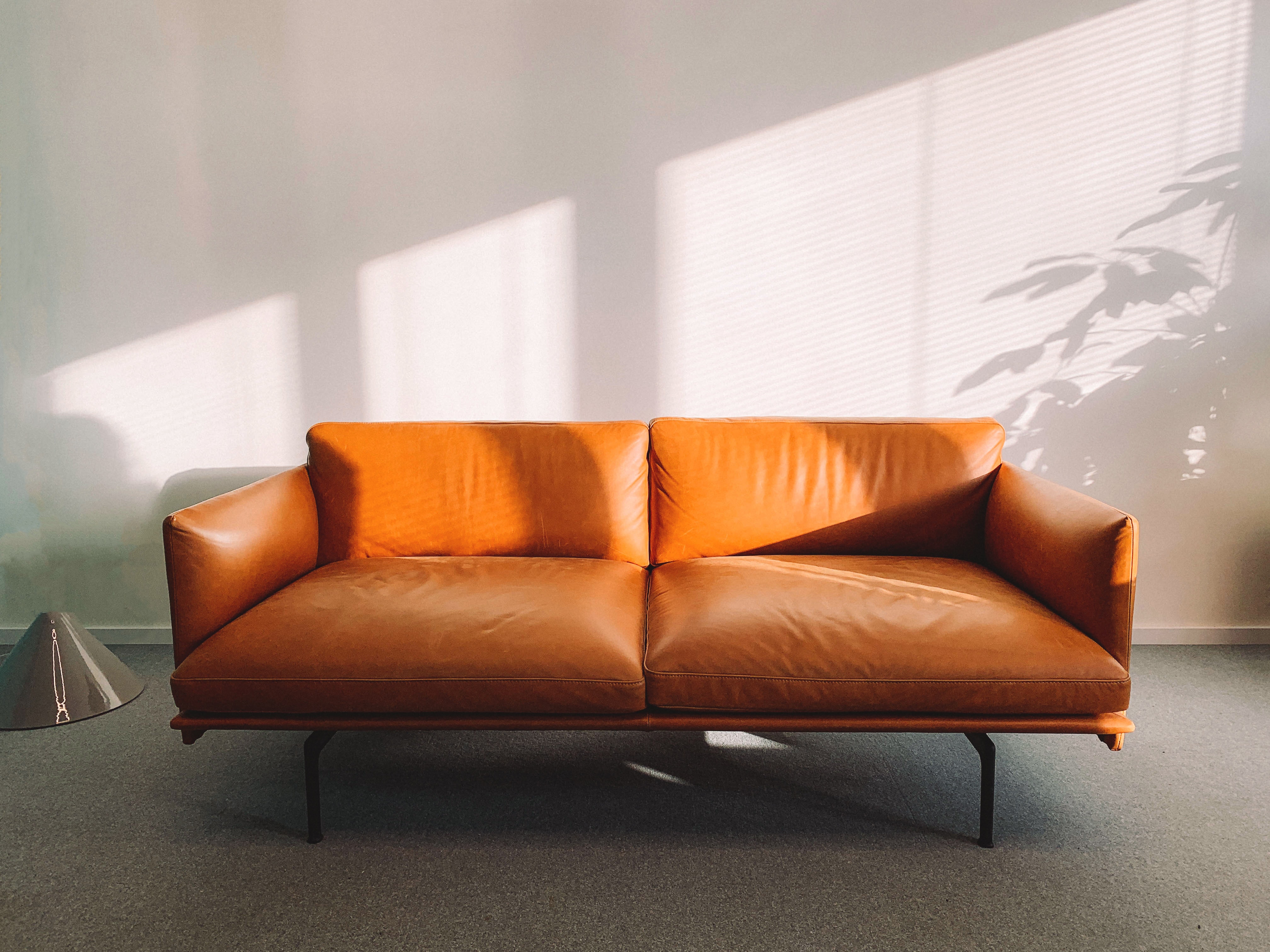
As a general tip, when it comes to removing crumbs and dust that might accumulate from daily use of your furniture, running and vacuum cleaner with brush attachment over your furniture as often as you vacuum your floors is a great habit to add to your cleaning regiment.
Have any leather tips on how to care for different types of leather that have worked well for you? Leave a comment below and let us know!
